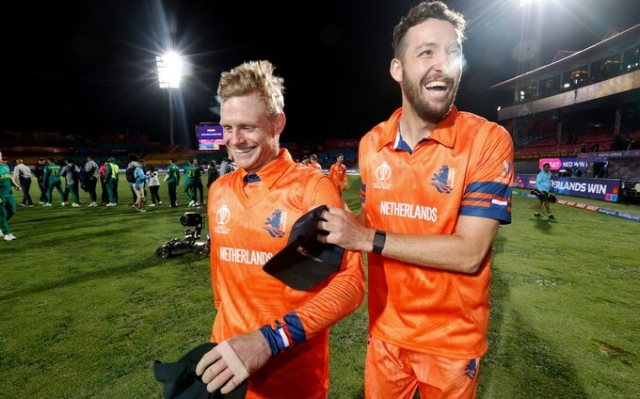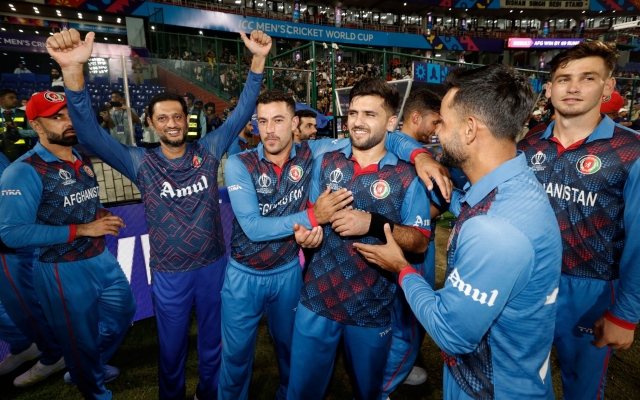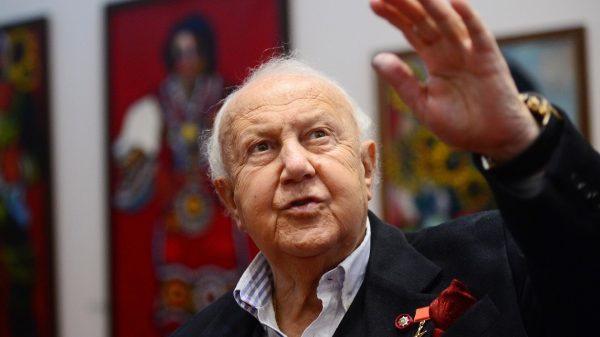 Netherlands' South Africa's defeat in Dharamsala came as a huge surprise. Photo: Getty Images/Darrian Traynor
Netherlands' South Africa's defeat in Dharamsala came as a huge surprise. Photo: Getty Images/Darrian Traynor
Two weeks into the 13th One-Day International World Cup and the wait for the deciding game continues. Perhaps Afghanistan and the Netherlands can be blamed for this. Instead of pushing England and South Africa, they scored clinical victories.
So far it has been far from a vintage World Cup. Fortunately, two of his greatest assets have been his unexpected wins in the last 72 hours. Although much of the tournament was forgotten, Afghanistan and the Netherlands momentarily turned the competition into a celebration of the sport around the world and a showcase of its power in unexpected frontiers.
In some ways, it was surprising that Afghanistan and the Netherlands were there at all: the tournament, with just 10 teams taking part, sometimes seems designed to keep lesser-known countries out. After the Netherlands qualified in July by winning three Test nations and then beating Scotland in a crucial qualifying match, their head coach had to plead with other nations to play them in ODIs ahead of the tournament. No one responded.
Cricket likes to tout its status as the second most popular sport in the world. Yet, compared with its competitors, the size of its flagship event, which remains the ODI World Cup, remains strikingly limited.
The current Rugby World Cup has 20 teams, twice as many as the Cricket World Cup; in 2027, this number will increase to 24. The FIBA World Cup has increased to 32 countries; Baseball, cricket's transatlantic cousin, features 20 teams in the World Baseball Classic. Even the last Kabaddi World Cup in 2016 had 12 teams.
While other sports are expanding their World Cups, the past generation has been the story of the incredible shortening of the ODI World Cup, just at a time when the global game has greater depth than ever before.
March 17, 2007 was to be a defining day in the sport's expansion: in the inaugural 16-team Cricket World Cup, Ireland defeated Pakistan and a few hours later Bangladesh beat India. These results showed that, despite the many challenges, the International Cricket Council's development programs have begun to expand the number of competing sides.
That was the problem: in Barbados, the Super Eight match was advertised as India. “Instead, Pakistan became Ireland versus Bangladesh, leaving broadcasters horrified.” «If this hadn't happened, a 16-team World Cup would have become the norm,» one ICC insider later told me.
So, in the name of bringing more certainty to a game built on uncertainty, the number of teams at the World Cup was quickly reduced. The number initially fell to 14, although Ireland beat England and the West Indies at the 2011 and 2015 World Cups; and then to the 10-team format that was used in 2019 and now.
Part of the justification for this is that it will result in a shorter event. In fact, if the 2015 World Cup lasted 44 days, the 2023 World Cup will last 46 days: the tournament has become longer, despite the reduction of teams.
A good World Cup is like a carnival. Instead, the 10-team format appears sterile, its structure betraying what it is: a competition built on the basis of giving India as many guaranteed matches as possible — nine. Most days there is only one match; the sides often have five or more days between games.
After two crushing defeats in their first three matches, England are facing elimination at almost every other World Cup. Instead, although England are under threat, the format allows them to lose one more game — perhaps even two — and still progress. The Cricket World Cup exhibits an unusual characteristic: it involves too few teams at a time and lasts too long.
 Nothing close was about Afghanistan's dominance over England in Delhi. Photo: Getty Images/Darrien Trainor
Nothing close was about Afghanistan's dominance over England in Delhi. Photo: Getty Images/Darrien Trainor
The 2027 format is at least a tacit admission of the first half of this mistake. It features 14 teams divided into two groups, with only the top three teams from each group advancing, ensuring high-stakes games from the start of the competition. But there remains a suspicion that the tournament will still be delayed. While the Rugby World Cup showcases the magic of knockout matches, the Cricket World Cup this year — and the new format in 2027 — has just three knockout matches.
However, while the expansion into 2027 is welcome, what happens between World Cups is equally important. To give bilateral ODIs more meaning and help develop the power of developing countries, cricket needs a structure for 50-over international play between World Cups.
As of 2020, it has just that: the World Super League Cup, which has also become qualification for this tournament. «I don't think there's any doubt that the Super League has been a huge help in terms of the path to associated countries,» Greg Barclay, the ICC chairman, said in July. This structure even has benefits for Twenty20: the greater variety of challenges in ODIs can also develop the skills of short-format players.
Naturally, the Super League was cancelled: larger countries did not see the point in it. Reviving the concept, even in a stripped-down form — say, two groups of seven with each side playing 18 ODIs per cycle — would at least acknowledge this mistake.
Too often, cricket has evolved in the face of more established nations, and not because of them. After the ODI defeat in Edinburgh in 2018, England did not deign to play Scotland in any format.























































Свежие комментарии